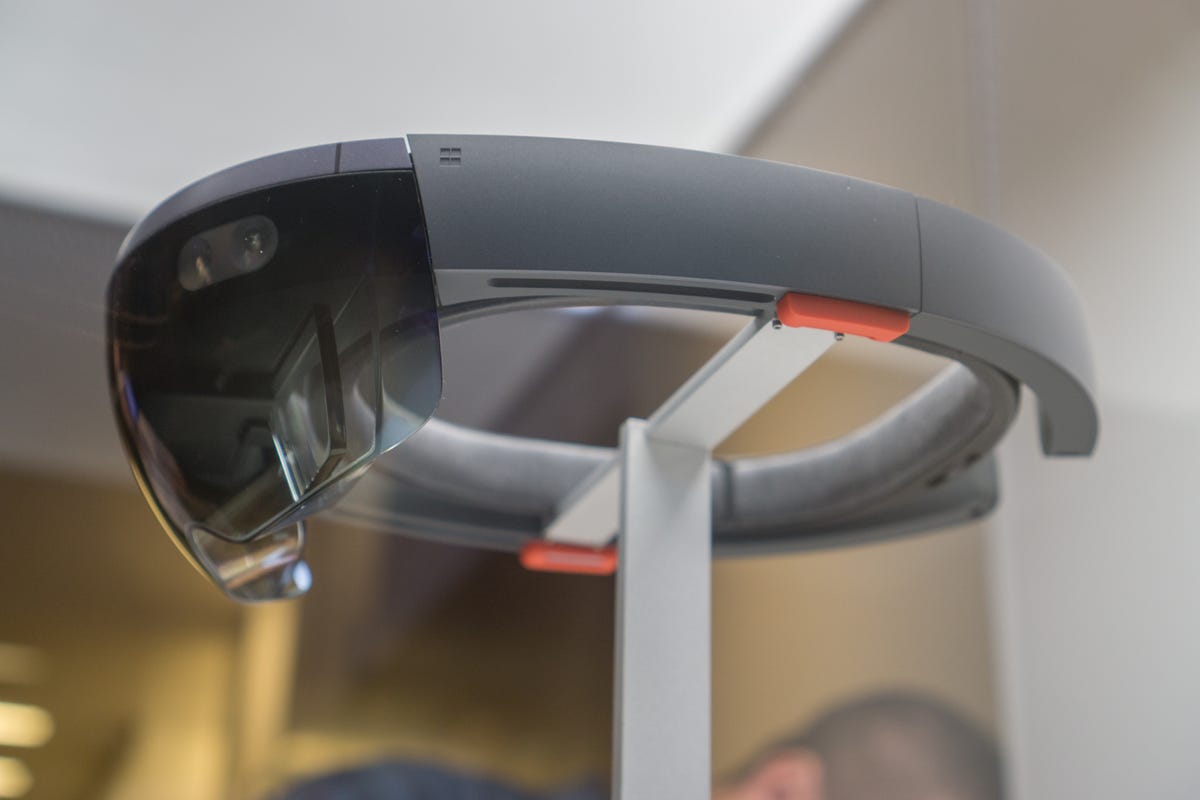For a select few lucky developers, it’s time to pay up: Microsoft’s HoloLens Development Edition is now available for preorder.
Developers who applied to be among the first to build holographic apps for the HoloLens will be receiving invitations to preorder the device, provided they qualify. The HoloLens will start shipping on March 30 in Canada and the US, and will cost $3,000 (which converts to roughly AU$4,200 and £2,150). The only way to get a Development Edition HoloLens is to receive an invitation from Microsoft, so the rest of us are out of luck for now. Developers who are accepted will also need a Windows 10 PC, Visual Studio 2015 and be running Unity 5.4 to get started.
$3,000 is a hefty sum for the augmented reality headset, which runs Windows 10 and generates three-dimensional objects that look like they exist in the real world (as opposed to virtual reality headsets like Facebook’s Oculus Rift and the HTC Vive, which aim to transport you to an entirely different world). Microsoft has emphasized that the Development Edition is for not for consumers, as the goal here is to create a healthy stable of holographic apps across a variety of industries, from health care and design to entertainment.


Your preorder comes with a carrying case, which is nice.
Microsoft
Microsoft is also sharing a few holographic apps with developers to offer up some inspiration. I was actually pretty impressed with holographic Skype the very first time I tried out HoloLens, so it’s great to see it among the first batch of apps. The Redmond, Washington-based company is also showing off a handful of games, including RoboRaid — previously known as Project X-Ray.
These apps and games are meant to demonstrate what the hardware can do, and aren’t necessarily something we’ll be playing on a consumer-oriented version of HoloLens. But creating compelling experiences for an entirely new kind of platform will be a learning experience for developers — I suspect having a head start will be much appreciated. If you’re looking to get in on the action, you can head to Microsoft’s site to apply.


With HoloLens, there’s no need to be tethered to a PC or phone.
Nate Ralph/CNET
Microsoft has also finally offered up a bit more concrete information on the HoloLens’ hardware. The headset is powered by an Intel processor, paired with Microsoft’s “Holographic Processing Unit”. It has 2GB of RAM and 64GB of storage space, and weighs 579 grams (1.2 pounds).
HoloLens is completely wireless and there are no fans, but you’ll only get 2 – 3 hours of life out of the batteries when the headset is in use. The headset also has Bluetooth 4.1 LE, and 802.11ac Wi-Fi. We’ve also got a lot more details about the optics and sensors at play here; you can find those below. Keep in mind that these specs are for the Development Edition: if and when a consumer version arrives, there’s no guarantee it’ll be powered by the same hardware.
HoloLens Hardware Details
Optics
- See-through holographic lenses (waveguides)
- 2 HD 16:9 lightengines
- Automatic pupillary distance calibration
- Holographic Resolution: 2.3M total light points
- Holographic Density: >2.5k radiants (light points per radian)



